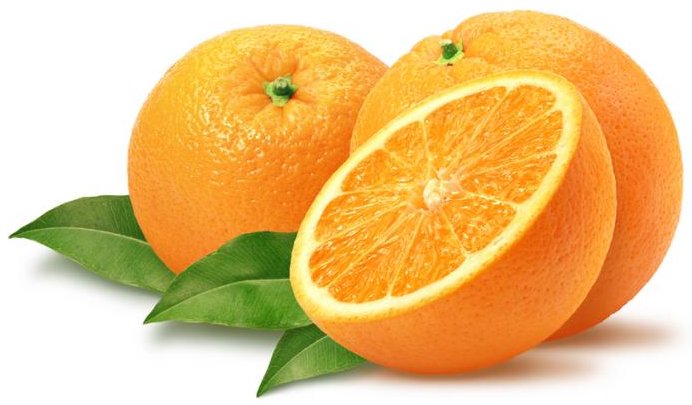

Citrus
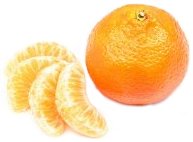
(Since the fruits of Citrus medica, the first of the genus to be introduced to the Mediterranean, had the same uses as the wood of the Sandarak tree, Callitris quadrivalvis, the ancient name of the latter wood, citrus, was transferred to the fruit of the former as Malus citrea; this renaming as the citrus apple led to the transfer of the name citrus first to the citron and later to other citrus fruits.) Rutaceae. About 16 species of small, evergreen trees or shrubs, armed with spines in leaf axils, old branches sometimes spineless. Leaves simple; petioles articulate with lamina, more or less winged. Inflorescence in leaf axils, corymbose, small, or flowers solitary; flowers bisexual or male; calyx cupulate, 4-5-lobed; petals 5, less often 4, linear, thick, glandular-punctate, imbricate in bud; stamens usually about 4 times as many as petals; ovary subglobose to subcylindric, generally 10-14-locular, ovules 4-8 or more per locule, in 2 rows. Fruit a hesperidium, segments containing fusiform pulp vesicles filled with very watery tissue, segments surrounded by white endocarp, outer peel copiously dotted with oil glands, yellow or orange when fully ripe; seeds obovoid, sometimes flattened, white or green. SE Asia, Pacific Islands. The number of species is much disputed as long cultivation and ease of hybridisation have led to many intergeneric and intrageneric hybrids, whose hybrid or otherwise origin is often unclear; according to some, all species may have been derived from just three species, Citrus maxima, Citrus medica and Citrus reticulata. CultivationThree major climatic zones may be distinguished for commercial Citrus cultivation; tropical climates, subtropical with winter rainfall as on the Mediterranean coast and California, and semitropical with summer rainfall, as in Florida, Southern Brazil and the Northern Transvaal. Optimum temperatures for outdoor cultivation range between 25-30ºC, with the coldest month having an average minimum of at least 15ºC; growth ceases below 13ºC and above 38ºC. Where these conditions pertain, Citrus grows well on a range of soils provided that they are well drained; where dry periods of more than three months are expected irrigation will be necessary. In cool temperate regions Citrus species make attractive and often productive ornamentals for the cool glasshouse or conservatory; in the traditional manner, pot-grown specimens can be moved outdoors for the summer. Citrus meyeri may be grown outside in mild maritime climates with warm, south wall placement and winter protection of glass lights or matting. Citrus maxima, Citrus limon and CItrus aurantium are particularly suitable for large pot or tub cultivation, the last two responding well to clipping into formal shapes; Citrus x paradisi is better grown in the glasshouse border. Grow in full sun in a deep, well-drained but moisture retentive loam-based mix, pH 5.0-6.0. Mist daily and keep well ventilated during the summer. Water moderately and feed regularly with a balanced fertilizer which includes trace elements when in full growth; give just sufficient water in winter to prevent desiccation of the roots and increase water as temperatures rise in spring. This dry dormancy in winter is necessary to promote flowering. Maintain a minimum temperature of 5-10ºC, rising to 15-20ºC in summer. Although some species such as Citrus limon will tolerate temperatures down to freezing point if well ripened, low temperatures will result in fruit drop; fruit may take up to a year to mature. Repot every third or fourth year in late winter to early spring; pot-bound plants often fruit better. Prune to shape and to restrict size in late winter; Citrus limon frequently produces water shoots which should be removed unless required to form a regular shape or to fill gaps with formally trained specimens. Propagate species by seed sown fresh in individual pots at 15ºC; leave seedlings in their pot for two years before potting on but feed regularly. With the exception of Citrus medica and Citrus x maxima, and some cultivars such as ‘Temple’ and ‘Clementine’ mandarins, the seed of most Citrus species is polyembryonic, i.e. two or more seedlings arise from each seed, giving very uniform offspring. Nuclear seedlings are genetically identical to the mother tree and are therefore sometimes used in commercial production to rejuvenate old clones with virus diseases; the virus rarely passes on. Those which produce only one (sexual) embryo produce variable offspring. Seed grown plants may take up to six years to bear fruit. Increase cultivars by chip or T-budding on to two-year-old root stocks of their species or on to Citrus aurantum, Citrus sinensis or Citrus nobliis. In commercial cultivation rootstocks are selected for resistance to Phytophthora foot rots (e.g. Citrus aurantum), resistance to scab (Citrus nobilis cultivars), drought resistance (Citrus nobilis ‘Rangpur’), tolerance of Triteza or quick decline (Citrus jambhiri), and for cold tolerance (Citrus trifoliata). Scale insect, mealybug and red spider mite may be problem pests under glass. 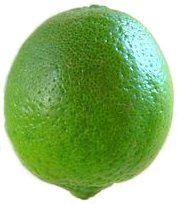 Citrus aurantifolia
Citrus aurantifolia
LIME. (Possibly a hybrid of Citrus medica and another species). Small tree, 3-5m; branches irregular; spine short, stiff, very sharp. Leaves elliptic-ovate to oblong-ovate, minutely crenate, obtusely pointed at apex, rounded at base, 5-7.5cm, pale green; petioles narrowly spathulate-winged. Inflorescence racemose, lax, short, generally 2-7-flowered; flowers small, white in bud; calyx cupulate, 4-5-lobed; petals 4-5, 8-12 x 3-4mm; stamens 20-25; ovary globose, depressed, 9-12-locular; style deciduous, stigma depressed, globose. Fruit small, ovate, 3-6cm diameter, green tinged yellow when ripe, peel prominently glandular-punctate, very thin, pulp very sour; seeds small, oval. Tropical Asia; widely cultivated, particularly in W Indies. ‘Bearss’: mild-flavoured. ‘Mexican’: juicy, acid. Z9. Citrus aurantiumSEVILLE ORANGE; BITTER ORANGE; SOUR ORANGE; BIGARADE; MARMALADE ORANGE. (Perhaps a backcross of Citrus maxima x Citrus reticulata). Tree to 10m with rounded crown; spines single, slender, blunt, usually short but to 8cm on fast-growing shoots. Leaves 7-10cm, ovate, bluntly pointed at apex, cuneate to broadly rounded at base; petioles 2-3cm, wing rapidly tapering, to 1.5cm broad near lamina, wingless near stem. Flowers solitary or clustered, large, white, fragrant; ovary 10-12-locular. Fruit subglobose, depressed at ends, 5-7cm diameter becoming hollow at centre when mature, brilliant orange tinged red, peel thick and rough, pulp acid, seeds numerous. SE Asia. ‘Chinotto’: compact, conical; leaves fine, dense; flowers abundant. Z9. Citrus bergamiaBERGAMOT; BERGAMOT ORANGE. Small tree. Leaves ovate-oblong; petioles long, winged flowers small, white, very fragrant. Fruit globose to pyriform, 7.5-10cm diameter, peel thin, smooth, pale to bright yellow, containing green oil, pulp acid but aromatic. S Italy, Sicily. ‘Feminello’: oil aromatic. Z9. Citrus hystrixMAURITIUS PAPEDA; LEECH LIME; CAFFRE LIME. Very similar to Citrus ichangensis, except petiole wings triangular; flowers smaller, 5-7mm diameter; stamens 25-30, free; fruit 5-7cm diameter, yellow or tinged green. SE Asia, widely naturalised, original distribution uncertain. Z9. 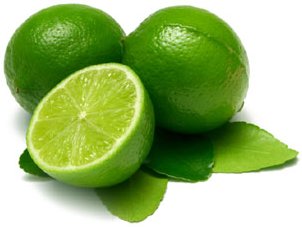 Citrus ichnagensis
Citrus ichnagensis
ICHANT PAPEDA. Shrub or small tree, armed, 1.5-4.5m; twigs angular when young; spines stout, sharp, 1.5-2.5cm, reduced or wanting on flowering twigs. Leaves 8-12 x 2-3cm, lanceolate, emarginate at apex, rounded or bluntly pointed at base; petioles very large, with obovate to oblong-spathulate wing, 4-6 x 2-3cm. Flowers 5-numerous, 2.5-3cm diameter; sepals 3mm, thick; petals 15-20 x 5-8mm, oblong, white; stamens 20, 1cm, all connate to apex when young, finally separating into bundles; ovary 7-9-locular, ovules many per locule, style very short, stigma as large as ovary. Fruit 7-10 x 3.5-5cm, lemon-shaped, pulp vesilcles very few, juice tasty but acid, peel, rough, 4mm thick; seeds large, very thick, 15 x 15 x 8mm. W & SW China. The hardiest evergreen Citrus species, and so of interest in the breeding of cold-resistant hybrids. Z8. Citrus jambhiriJAMBHIRI ORANGE LIME LOOSEJACKET. Shrub or small tree, generally unarmed. Leaves ovate to elliptic, tapered, crenate-serrate, emarginate at apex, somewhat lemon-scented; petiole narrowly margined or wingless. Flowers small; petals 5, generally white. Fruit ovoid to subglobose, hollow in centre, 5-7.5cm diameter, with apical papilla, peel thick, lemon-yellow, slightly lemon-flavoured, segments 9-12, pulp pale lemon yellow, very sour. India. Z10. Citrus kotokan(Possibly a 4-way hybrid, Citrus aurantium x Citrus sinensis x Citrus nobilis x Citrus maxima). Spreading shrub, 4m; spines to 6mm. Leaves 10 x 6cm, oblong, entire to obscurely crenate, coriaceous; petiole 1-2cm, broadly winged, wings tapering to base. Flowers solitary, or rarely in racemes; calyx cupulate, 5-lobed; petals obovate-oblong, 17 x 9mm; stamens 20. Fruit 7-8 x 11cm, depressed-globose, not hollow in centre; peel rough, thick. Asia. Z9. Citrus limettaSWEET LEMON; SWEET LIME. Small tree or erect shrub, much-branched, armed. Leaves 8-10cm, ovate, acute at apex, obtusely serrate near base; petioles short, scarcely or not at all winged. Fruit rounded or lemon-shaped, to 6.5cm diameter with hemispheric apical papilla to 2cm diameter, yellow tinged green, not aromatic, segments about 10, pulp very pale watery green, slightly sweet or acid, flavour weak and insipid. Origin unknown; found in Mediterranean gardens. Z9. 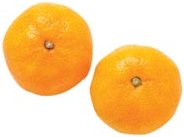 Citrus limettoides
Citrus limettoides
Shrub or small tree. Leaves ovate or elliptic, obtuse and often shortly mucronate at apex, somewhat rounded or rather acute at base; petiole unwinged. Flowers white. Fruit subglobose to ellipsoid, sulphur-yellow, rind very thin, pulp sweet, not aromatic; seeds long, narrow. India. ‘Palestine’: very juicy. Z10. Citrus limonLEMON. (Perhaps Citrus medica x Citrus aurantifolia). Small tree, 2-7m; spines short, thick, stiff. Leaves elongate-ovate, acute at apex, more or less serrate, pale green, flushed red when young; petiole narrowly winged, articulate with lamina. Flowers solitary or in small clusters, buds tinged red; petals white above, tinged purple below; stamens 20-40; ovary subcylindric, narrowed to thick style. Fruit 7-15 x 5-7cm, oval with low, broad papilla at apex, segments 8-10, pulp very sour, peel rather thick, conspicuously glandular-punctate, yellow when ripe; seeds small, ovoid, pointed. Origin unknown; introduced to Mediterranean by Arabs in 1000-1200 AD; widely cultivated in warm temperate and subtropical regions. ‘Eureka’: fruit medium-sized, oblong, few-seeded, very acid. ‘Improved Meyer’: virus-free selection of ‘Meyer’. ‘Lisbon’: medium-sized, oblong, few-seeded, very acid. ‘Meyer’ (DWARF LEMON): compact, hardy; fruit large; flowers large, waxy, white. ‘Sungold’: medium-sized, oblong, many-seeded, with tricoloured skin and leaves. ‘Variegated Lemon’: leaves variegated cream; fruit striped green, later fully yellow. Z9. Citrus x limonia(Probably Citrus limon x Citrus reticulata). RANGPUR; RANGPUR LIME; MANDARIN LIME; LEMANDARIN. Tree, medium-sized; branches spreading and pendulous; spines few, small. Leaves oblong to elliptic, dull green. Flowers flushed purple, fragrant. Fruit globose, depressed-globose to broadly obovoid, often with short apical papilla, segments 8-10, easily separated, pulp orange, very acid, peel thin, rather loose, orange tinted yellow or flushed red; seeds numerous. Included here is Citrus otaitense, OTAHEITE ORANGE, a small bush, unarmed; fruit depressed-globose to globose, 5cm diameter, juice rather sweet and insipid. Often grown as an ornamental potplant, particularly at Christmas; this and x Citrofortunella microcarpa are the florist’s miniature potted orange. Citrus maximaPUMMELO; SHADDOCK. Large tree with rounded crown, to 5.5m; branching regular, twigs pubescent when young; spines blunt, thin, bowed, or wanting. Leaves large, ovate-elliptic, apex acute, base rounded, glossy dark green above, pubescent beneath; petioles broadly more or less cordate-winged. Flowers solitary or in small clusters, white. Fruit globose or broadly pyriform, 10-15cm diameter, to 8kg weight, rind thick, light lemon-yellow, pulp somewhat acid, very tasty; seeds numerous, large. Polynesia. Source of bitter narinjin, used in sweets and drinks; parent of many economically important fruits. ‘Channdler’: large; flesh pink. Z9.  Citrus medica
Citrus medica
CITRON. Shrub or small tree, 4-5m; twigs flushed purple when young; spines solitary, stout, short. Leaves 10-18cm, elliptic-ovate, serrate, apex rounded, base rounded or cuneate; petioles short, scarcely winged. Inflorescence racemose, short, few-flowered, flower buds tinged purple; flowers bisexual or male; petals 5, flushed pink without; stamens 30-40 or more; ovary bulging, 10-13-locular. Fruit large, 15-30 x 10-15cm, to 2.5kg, ovoid or oblong, obtuse at apex, fragrant, lemon-yellow when ripe, rind very thick and rough, small, filled with pale green acid or slightly sweet pulp; seeds numerous, to 10 x 4mm. Cultivated in E Indies and Mediterranean (particlularly Corsica); origin uncertain; excavations show it was known in Mesopotamia in 4000 BC; this was the first citrus fruit to be introduced to the Mediterranean, reputedly by the returning armies of Alexander the Great, in 300 BC. ‘Etrog’; (ETROG; ESROG; CEDRAT); fruit lemon-sized, elongate, fragrant. ‘Fingered’: split into finger-like sections; little pulp but very fragrant. Z9. Citrus meyeri(Possibly of hybrid origin, Citrus limon x Citrus sinensis). MEYER LEMON; CHINESE DWARF LEMON; DWARF LEMON. Very similar to Citrus limon, except fruit rounded, 7-8cm diameter, papilla wanting, peel thin and very smooth. The hardiest lemon; grows easily from cuttings making an attractive potplant. Z9. Citrus myrtifoliaSimilar to Citrus aurantium, except often unarmed; internodes shorter, 1-2cm; leaves much smaller, one-third to half the size of those of Citrus aurantium; fruit small, a quarter to half the size of those of Citrus aurantium. Known only in cultivation; reputedly introduced to Mediterranean from China in the 17th century. Z9. Citrus nobilisTANGOR; FLORIDA ORANGE; KING ORANGE; KING MANDARIN; KING-OF-SIAM. (Citrus reticulata x Citrus sinensis?) Tree to 4.5m; branches ascending, twigs glabrous; spines generally present on suckers, wanting on flowering branches. Leaves 4-8 x 2-4cm, ovate-oblong to ovate-lanceolate, narrowed to obtuse or slightly emarginate apex, cuneate or obtuse at base; petiole 0.5-1.5cm, very narrowly winged. Flowers solitary or in short 2-4-flowered racemes; calyx glabrous, deeply cut into 5 ovate segments; petals 5, oblong-ovate, 7-10 x 2-3mm; stamens about 20, almost free or a few connate. Fruit depressed-globose, indented at apex, 5-8cm diameter, peel thin, easily removed, green to orange tinged yellow. Vietnam. ‘Murcott’: very juicy, full-flavoured. ‘Ortanique’: large, rather acid. ‘Temple’: juicy, spicy-flavoured, easily peeled. Z9.  Citrus x paradisi
Citrus x paradisi
GRAPEFRUIT; PAMPELMOUSSE; POMELO. (Origin unknown, perhaps Citrus maxima x Citrus sinensis). Tree, large, crown rounded with dense foliage; twigs slender, angled when young, glabrous or subglabrous. Leaves ovate (larger than sweet orange, smaller than pommelo), blunt at apex, broadly rounded at base, glabrous; petioles with rather broad oblanceolate to obovate wing, touching lamina at top. Flowers solitary or in small clusters in leaf axils, large; calyx 5-lobed; petals smaller than pummelo, larger than sweet orange. Fruit larger than sweet orange, smaller than most pommelos, globose or broadly globose, peels relatively thin, yellow or tinged slightly orange, pulp light yellow or flushed red, very juicy; seeds smaller than pummelo, white, smooth. W Indies, known in the 18th century, though perhaps imported from China. Cultivars include ‘Red Blush’ and ‘Star Ruby’ (pink-fleshed), ‘Golden Special’ (white-fleshed), ‘Marsh’ (seedless, very productive, grown worldwide). Z9. Citrus ponderosaHorticulture. GIANT LEMON; WONDER LEMON; AMERICAN WONDER LEMON. Like Citrus limon except fruit rounded, larger, to 12cm diameter and 1kg or more, peel thick and rough, yellow tinged orange. Z9. Citrus reticulataMANADRIN ORANGE; TANGERINE; CLEMENTINE; SATSUMA. Shrub or small tree, armed; twigs slender. Leaves 4cm, lanceolate, narrowly to broadly so; petiole narrowly winged. Flowers solitary or in small clusters, in leaf axils. Fruit subglobose to flattened globose, to 8cm diameter, yellow-orange to flame-orange when ripe, peel thin, loose, easily removed, segments 10-14, pulp aromatic, very sweet; seeds small, pointed one end. SE Asia; various forms cultivated in Mediterranean, US, S America, E Asia, India. ‘Clementine’: long season. ‘Cleopatra’: fruit small, depressed-globose. ‘Dancy’ (‘Christmas Tangerine’): small, fruit small, juicy, ‘Kinnow’: large, very juicy. ‘Owari Satsuma’: very sweet. Z9. Citrus sinensisORANGE; SWEET ORANGE. (Perhaps introgressed hybrid of Citrus maxima x Citrus reticulata). Tree, medium-sized, 8-13m, crown rounded; twigs angled when young; spines rather flexible, slender, blunt, sometimes wanting. Leaves medium-sized, acute at apex, rounded at base; petioles narrowly winged, articulate at both ends. Flowers solitary or in small racemes in leaf axils, medium-sized, very fragrant; sepals 5; petals 5; stamens 20-25; ovary subglobose, 10-13-locular, style slender and soon deciduous. Fruit oval to flattened globose, with solid core, never hollow, pulp sweet, peel thin, not bitter, orange or golden; seeds cuneate-ovoid. Origin unknown; probably S China and Vietnam; cultivated worldwide. Introduced to Mediterranean by European sailors in about 1500 AD, the first Citrus introduced to be valued other than medicinally. ‘Hamlin’: medium to small, sweet, nearly seedless. ‘Moro’: blood orange, deep-coloured flesh, skin also streaked, long-keeping. ‘Pineapple’: sweet, pineapple-scented, medium-sized. ‘Robertson’: navel, medium large, early-bearing. ‘Shamouti’ (‘Jaffa’); large, juicy, peels easily. ‘Tarocco’: large blood orange, nearly seedless. ‘Valencia’: rather acid, keeps well, late-bearing. ‘Washington’: large, slightly flattened navel, seedless. Z9. Citrus x tangeloTANGELO; UGLI FRUIT. (Citrus paradisi x Citrus reticulata). Variable, mostly intermediate between parents. Leaves unifoliate; petiole narrowly winged. Fruit aromatic, bright orange to flame-orange, peel thin, smooth, moderately loose, segments 9-11, flesh sweeter than Citrus paradisi. Arose in US in early 20th century; cultivated particularly in Florida. Cultivars include ‘Orlando’ and ‘Minneola’. Z9. Citrus wisoniiTree, 9-11m, glabrous, armed. Leaves 1-2.5 x 0.5-1.5cm, elliptic-oblong, entire or somewhat sinuate-dentate, long acuminate or somewhat rounded at apex, broadly cuneate at base; petiole 3-8mm, wing obcordate. Flowers solitary or clustered, rarely in short racemes; calyx cupulate, lobes 5, deltoid; petals obovate-oblong, veins ridged; stamens numerous, connate. Fruit globose, peel very thick and rough. China. Z9.
|
Home
Grow Herbs
Grow Nuts
Grow Vegetables
Cyberian Index
If you like this website and want one of your own contact
Cyberian All information correct at
time of publication and open to updates as necessary. No part of this website,
or its vectors, may be produced in any shape or form, using any type or design
of medium, system, equipment or otherwise without the prior written consensual
notice of the Cyberian. Any breach of these requirements will result in the
appropriate action. If in doubt, e-mail contact is recommended.
Some components of this website were obtained as open-source software and are
used in the same non-profit manner on this website.